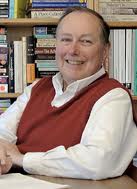 Editor's note: School choice isn't just an American debate, and it's not just at issue now. Noted school choice scholar Charles Glenn offers redefinED readers some historical context. This is the first in a three-part series.
Editor's note: School choice isn't just an American debate, and it's not just at issue now. Noted school choice scholar Charles Glenn offers redefinED readers some historical context. This is the first in a three-part series.
While protections for educational freedom emerged from political struggles in a few countries – notably in Belgium, with the independence movement of 1830, and in the Netherlands, with the political mobilization of the Protestant and Catholic “kleine luyden” later in the 19th century – these were exceptional until after the Second World War.
It was only in reaction to the totalitarian regimes of the 20th century that the international community became aware of the need to put in place protections for the freedom of families to choose an alternative to government-sponsored schooling. Communist and fascist regimes sought to carry out more thoroughly what had already been implicit in the educational programs of mildly progressive governments of the late 19th century, but in a way that stripped the mask from the elite presumption to reshape the children of the common people.
The post-war movement to define human rights included the right to educational freedom, defined as “the liberty of parents . . . to choose for their children schools, other than those established by public authorities . . . and to ensure the religious and moral education of their children in conformity with their own convictions.” This right is by no means self-evident even in democratic regimes, where ‘progressive’ elites may think it their duty to use the educational system to make children better than their parents.
The words left out of the quotation above, “which conform to such minimum educational standards as may be laid down or approved by the State,” leave the door open for governments to impose requirements upon non-government schools which would make it impossible for them to maintain the distinctive character sought by parents. There is clearly an obligation upon contemporary governments to take steps necessary to protect children as well as to ensure the public interest is served by all elements – private as well as public – of the educational system. The education of the next generation is a matter of public concern and should be guided, in a democratic system, by shared assumptions about the common good . . . within limits reflecting the pluralistic nature of society. (more…)